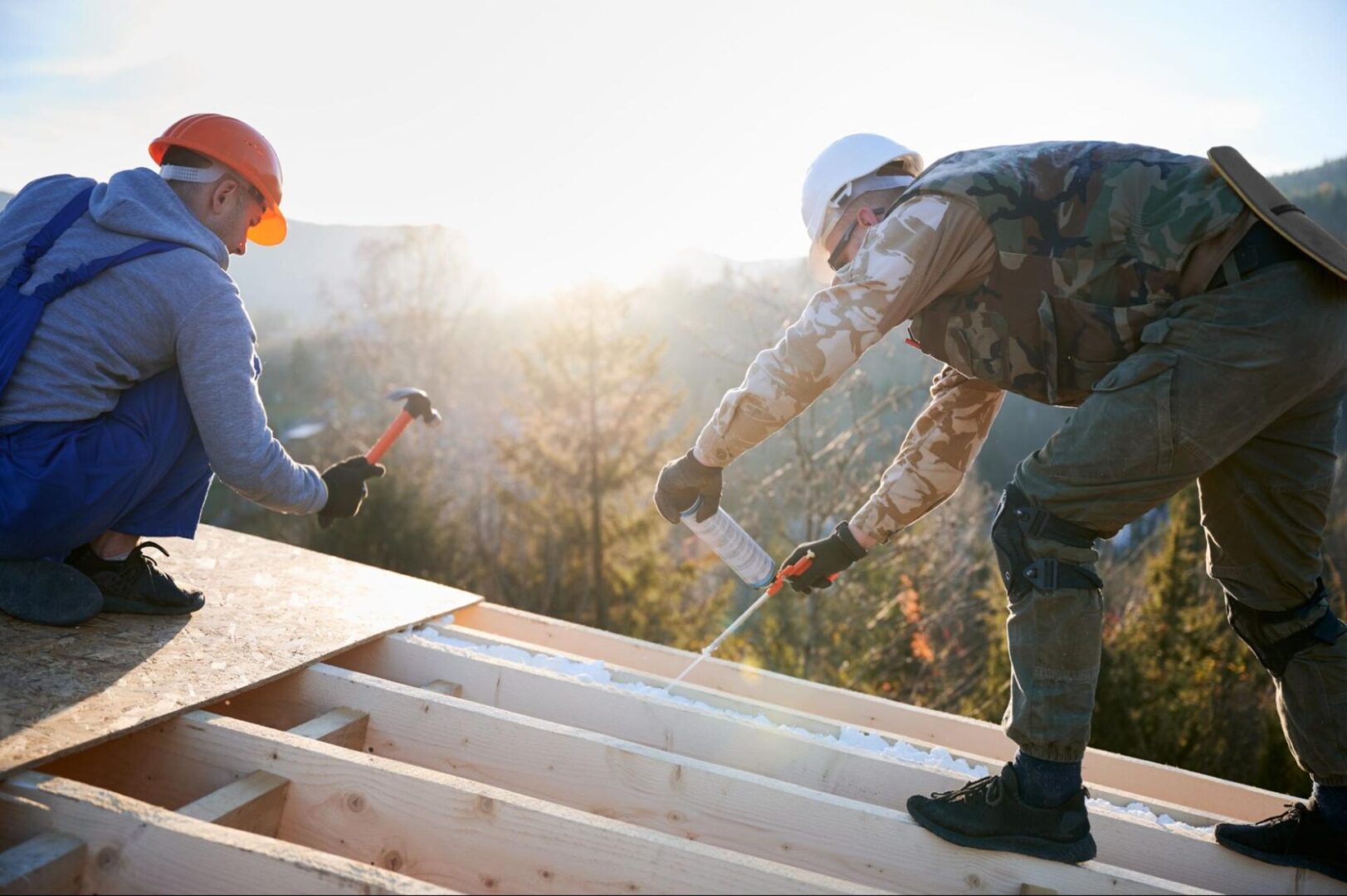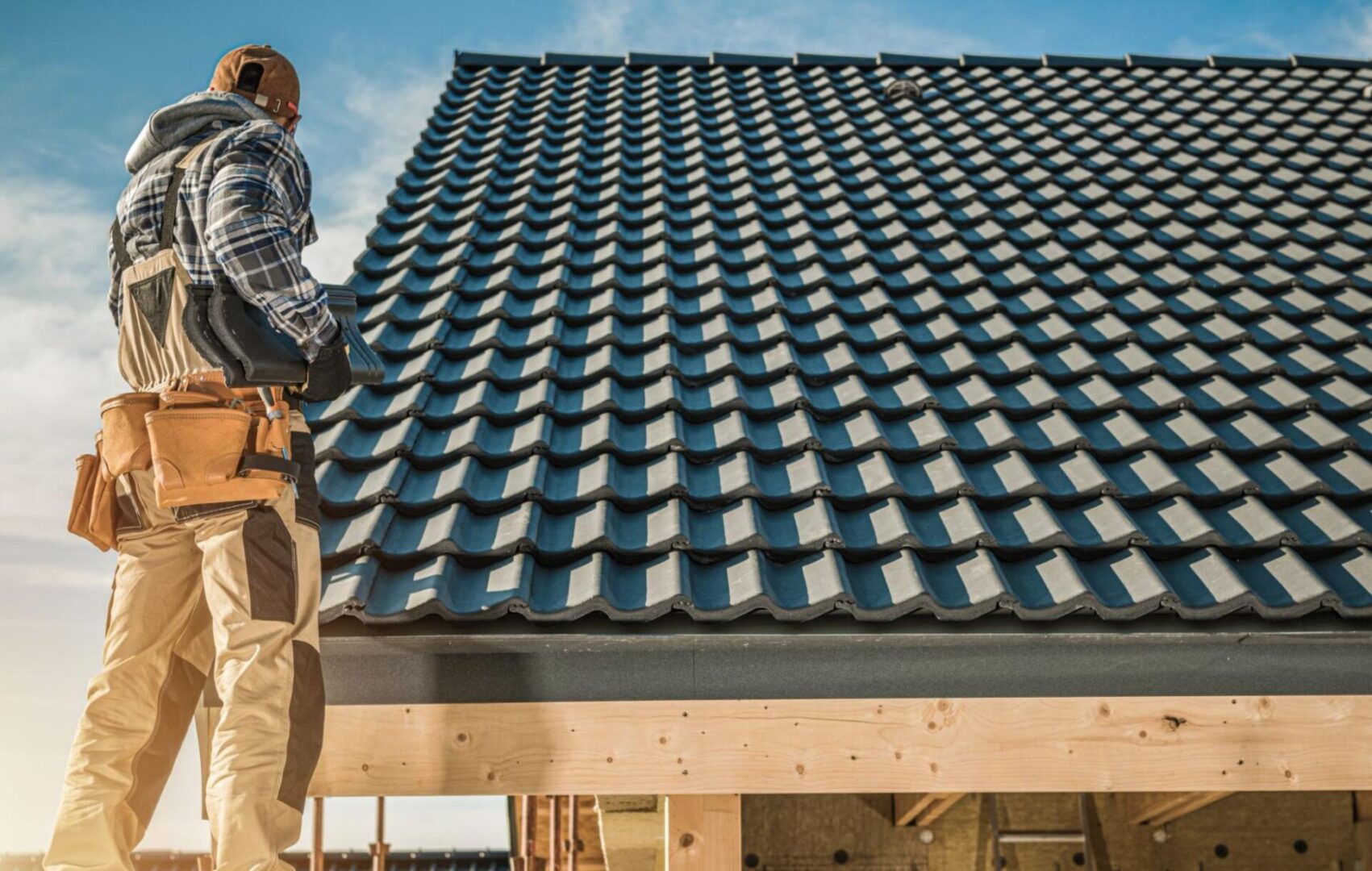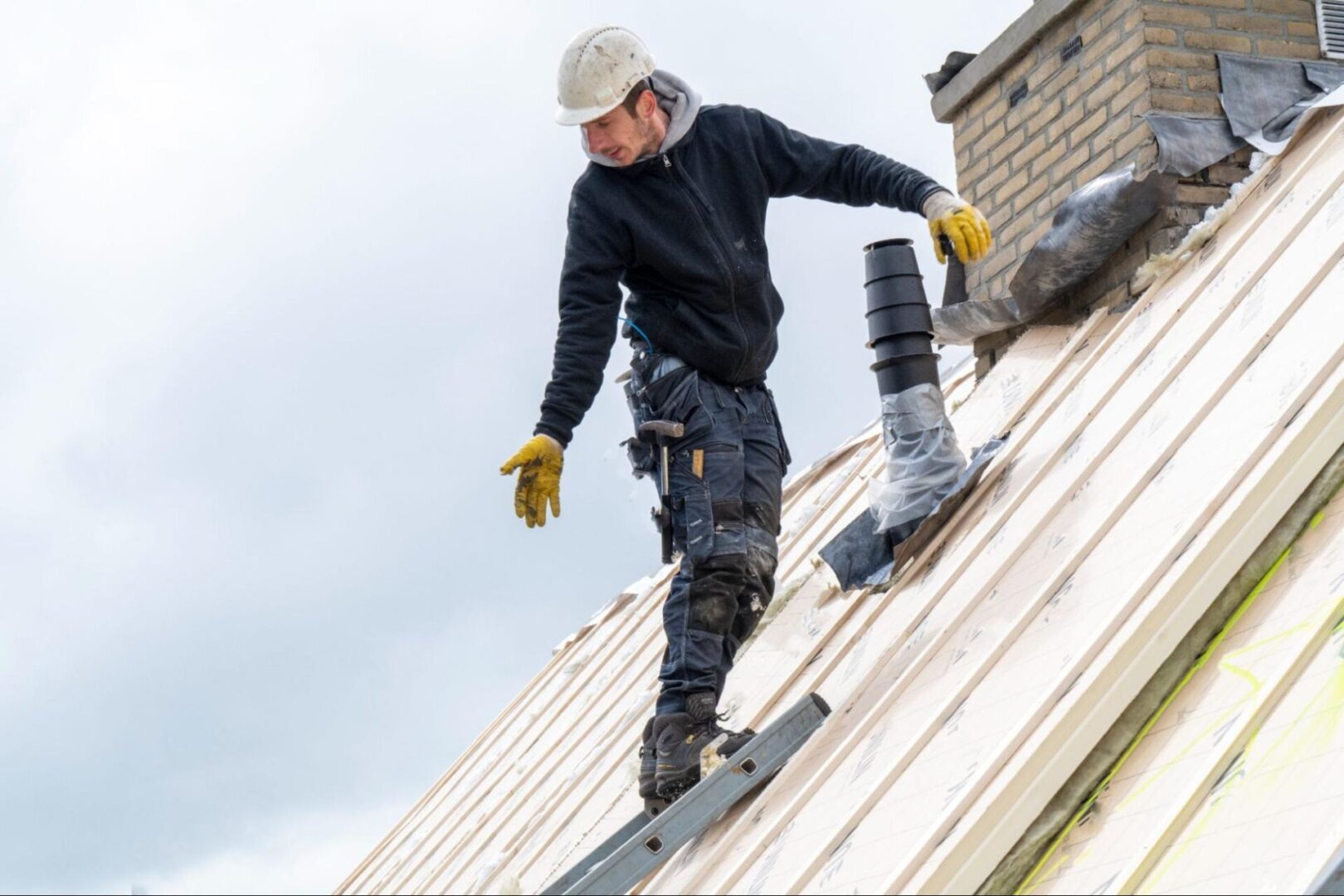
Roofs don’t last forever, but the right roofing services can help them stay in good shape for years. A roof’s lifespan depends on its material, local weather conditions, and how well it’s maintained. A well-installed roof can last for decades, while one with poor upkeep might need repairs or replacement much sooner. Regular inspections, timely maintenance, and professional roofing services keep roofs sturdy and protect homes from costly damage.
Signs Roofs Are Nearing the End of Their Lifespan
Roofs don’t fail overnight, but signs reveal when they are past their prime. If ignored, minor problems lead to major issues requiring costly repairs or a full replacement. Catching early warning signs helps homeowners address damage before it worsens. Knowing what to look for prevents unexpected leaks, structural problems, and expensive fixes:
Leaks and Water Damage Appear Indoors
Water stains on ceilings or walls indicate a failing roof. Small leaks worsen over time, leading to mold growth and structural damage. A roof that allows water inside needs immediate attention before costly repairs pile up.
Cracked, or Missing Shingles Show Aging
Shingles that curl, crack, or fall off signal that the roof is nearing its lifespan. Constant exposure to sun, rain, and wind weakens materials, making them brittle. A roof with widespread shingle damage struggles to protect the home from the elements.
Sagging Roof Sections Indicate Structural Issues
A roof that sags in certain spots suggests serious structural problems. Water damage, weakened supports, or deteriorated decking cause sections to sink. Delaying repairs risks complete roof failure and more expensive restoration work.
Granules Collect in Gutters
Asphalt shingles shed granules as they age, and excessive granule loss shortens their lifespan. Granules protect shingles from UV rays and harsh weather, so losing them leads to faster wear. Checking gutters for buildup helps determine if the roof is wearing out.
Rising Energy Bills Suggest Poor Insulation
A roof in poor condition allows air to escape, forcing heating and cooling systems to work harder. Damaged shingles, inadequate ventilation, and leaks contribute to energy loss. Higher utility bills often indicate an aging roof that no longer insulates appropriately.
Factors That Affect How Long Roofs Last
A roof’s lifespan isn’t just about its material. Factors affecting durability may include installation, quality of materials, climate, and maintenance. Regular inspections and timely repairs prevent minor issues from turning into major problems. Knowing what affects a roof’s durability helps homeowners make choices that extend its life and avoid costly replacements:
Material Selection
Different roofing materials offer varying levels of durability and resistance to the elements. Asphalt shingles last around 20 to 30 years, while metal and tile roofs can exceed 50 years with proper care. Choosing a high-quality material suited for the local climate improves long-term performance. Budget-friendly options may save money upfront but often require more frequent repairs or replacements.
Weather and Climate Conditions
Extreme temperatures, heavy rainfall, and strong winds accelerate roof wear and tear. Frequent exposure to snow and ice can lead to moisture buildup, causing leaks and structural damage. Hot and sunny climates weaken roofing materials over time, making them brittle and prone to cracks. Storms with high winds and flying debris also contribute to early roof deterioration.
Improper Installation
Even the best roofing materials fail earlier if installed incorrectly. Poor workmanship leads to gaps, weak seams, and inadequate ventilation, which cause leaks and structural issues. Hiring experienced roofing professionals ensures correct installation, improving roof longevity. Choosing reputable contractors reduces the risk of costly repairs due to installation errors.
Maintenance and Repairs
Regular roof inspections help catch minor problems before they turn into significant damage. Cleaning gutters, replacing damaged shingles, and sealing leaks keep the roof in good condition. Ignoring small issues like cracked shingles or minor leaks spreads water damage, weakening the structure. A well-maintained roof lasts longer and performs better in all weather conditions.
Ventilation and Insulation
Poor ventilation leads to trapped heat and moisture, which weaken roofing materials over time. Insufficient insulation allows temperature fluctuations that cause shingles to expand and contract, leading to cracks. Proper airflow reduces moisture buildup in the attic, preventing mold growth and wood rot. Good ventilation and insulation help roofs last longer and reduce energy costs.

How Long Do Roofs Last Based on Their Material?
Roofing varies on the durability of the materials. Choosing the right material helps homeowners reduce long-term costs and maintenance issues. Some options require frequent upkeep, while others remain sturdy with minimal repairs. Understanding how long each type lasts makes it easier to plan for future replacements:
Asphalt Shingle Roofs Last 20 to 30 Years
Asphalt shingles remain a common choice due to their affordability and easy installation. Three-tab shingles typically last around 20 years, while architectural shingles can reach 30 years with proper care. Regular maintenance, such as replacing damaged shingles and cleaning gutters, prevents early deterioration. Extreme weather conditions, including heavy storms and intense sunlight, often shorten the lifespan of asphalt roofs.
Metal Roofs Last 40 to 70 Years
Metal roofing provides long-term durability and resistance against harsh weather. Aluminum and galvanized steel typically last 40 to 50 years, while copper and zinc can exceed 70 years. Protective coatings and proper installation help prevent rust and corrosion, keeping the roof in good condition. Fewer repairs and a longer lifespan offset higher upfront costs than other materials.
Tile Roofs Last 50 to 100 Years
Clay and concrete tiles offer excellent longevity and can withstand extreme weather. Most tile roofs last at least 50 years, with some exceeding 100 years when properly maintained. Regular inspections help prevent cracks and leaks, especially in areas with freeze-thaw cycles. Due to their weight, tile roofs require strong structural support to avoid long-term damage.
Wood Shake Roofs Last 30 to 50 Years
Cedar and other wood shakes provide a natural look but require consistent upkeep. A well-maintained wood shake roof lasts between 30 and 50 years, depending on climate and treatment. Routine sealing and pest control help prevent decay, mold, and insect damage. Moisture buildup and fire risks make wood roofs less durable in humid or wildfire-prone areas.
Slate Roofs Last Over 100 Years
Slate is one of the longest-lasting roofing materials, with some roofs lasting well beyond a century. Natural stone resists fire, water damage, and extreme weather conditions, making it a reliable option. Proper installation ensures stability, as slate tiles are heavy and require substantial support. While costly, a slate roof often outlasts multiple generations, making it a worthwhile investment.
Flat Roofs Last 15 to 40 Years
Flat roofing lifespan varies depending on the material used. Built-up roofing (BUR) lasts around 15 to 30 years, while modified bitumen typically lasts 20 to 30 years. Single-ply membranes like TPO and EPDM generally last 20 to 40 years and require regular maintenance. Routine inspections and sealing help prevent leaks and extend the lifespan of flat roofs.
How Long Do Roofs Last? Tips to Extend Their Lifespan
A well-maintained roof lasts much longer than one left unchecked. Small repairs and routine care prevent minor problems from turning into costly damage. Ignoring maintenance leads to leaks, weakened structures, and premature replacement. Regular inspections and timely fixes keep a roof strong and reliable for years.
Routine Inspections Help Detect Roof Problems Early
Checking the roof at least twice yearly helps catch damage before it worsens. Loose shingles, minor leaks, or clogged gutters often go unnoticed until they cause bigger issues. A professional roofer can spot hidden problems and recommend necessary repairs. Staying ahead of damage prevents expensive fixes down the road.
Proper Ventilation Reduces Roof Moisture Damage
A well-ventilated attic prevents heat and moisture buildup, which weakens roofing materials. Trapped moisture leads to mold growth, wood rot, and insulation damage. Installing ridge vents, soffit vents, or attic fans improves airflow and stabilizes temperatures. Good ventilation helps shingles last longer and reduces energy costs.
Gutter Cleaning Prevents Water Buildup on Roofs
Clogged gutters cause water to pool on the roof, leading to leaks and structural damage. Leaves, dirt, and debris block drainage, forcing water to back up under shingles. Regularly cleaning gutters and downspouts keeps water flowing away from the home. Installing gutter guards reduces buildup and minimizes the need for frequent cleaning.
Timely Repairs Avoid Costly Roof Replacements
Fixing minor problems earlier prevents significant repair problems. Cracked shingles, minor leaks, and loose flashing worsen when left untreated. Quick repairs extend the roof’s life and prevent interior damage to ceilings and walls. Delaying maintenance leads to premature roof failure and unexpected costs.

Knowing Roof Lifespan Saves Property’s Future
Roofs protect homes from harsh weather. Though some materials are known for their durability from harsh weather, they may deteriorate over time. Thus, solutions may require installation and upkeep depending on the damage the roofing sustains. A neglected roof deteriorates faster, leading to unexpected repairs and high replacement costs. Regular maintenance, including inspections and minor fixes, prevents small issues from turning into major damage. Professional roofing services help extend lifespan by addressing wear and tear before it worsens. A long-lasting roof keeps a home safe, maintains property value, and reduces unnecessary expenses.
Learn how long roofs last by exploring Minnesota’s 1st Choice Replacement Windows and Doors blog for trusted roofing maintenance and replacement tips.

